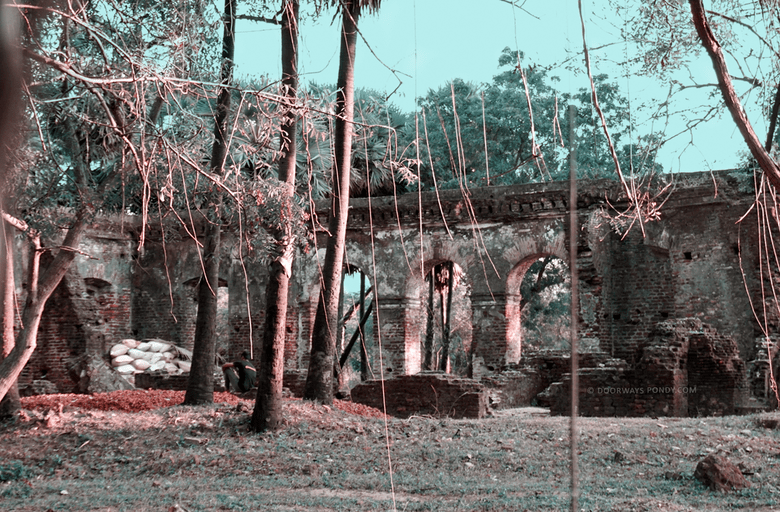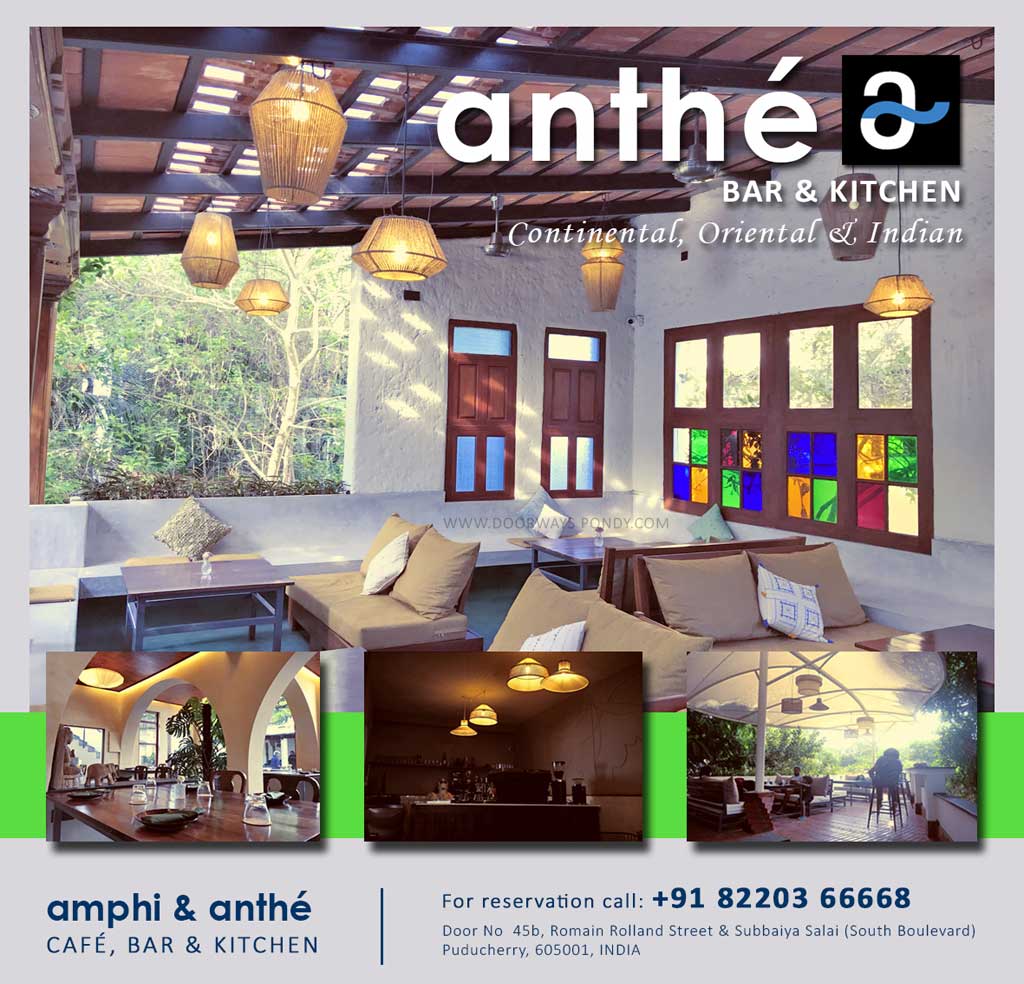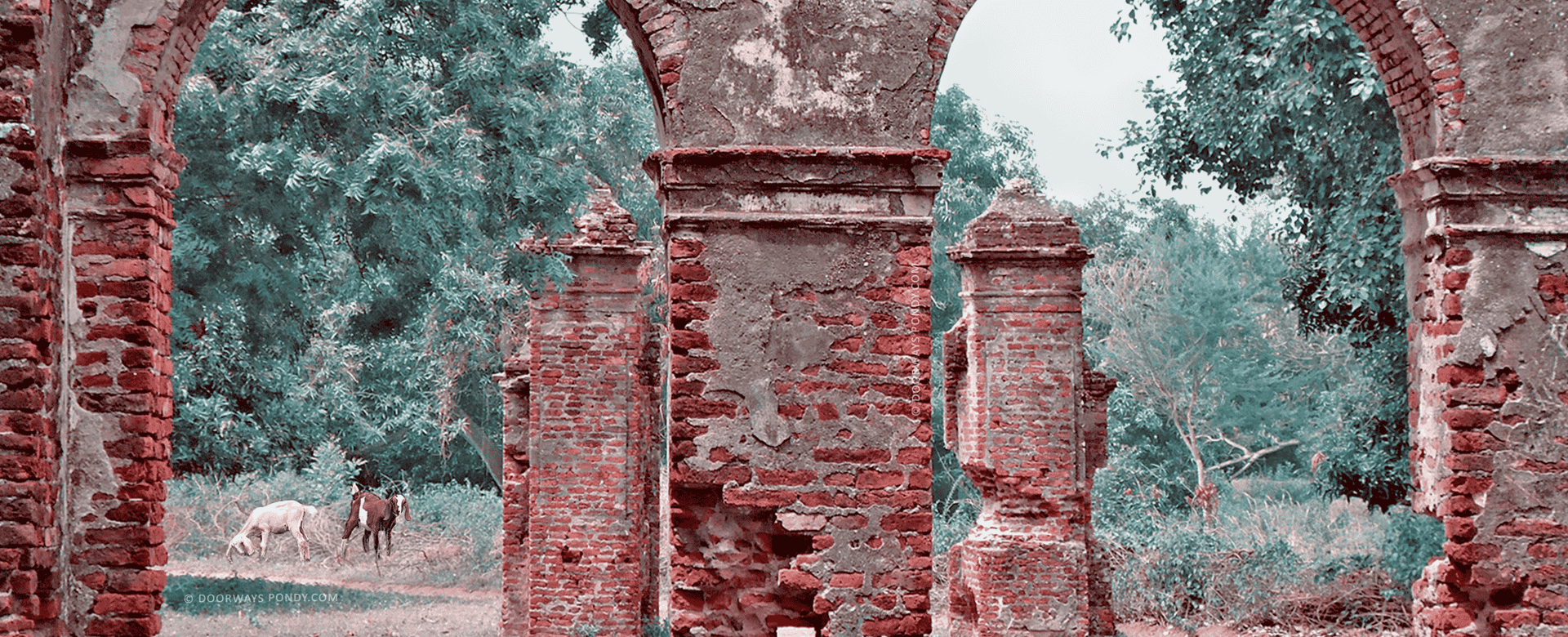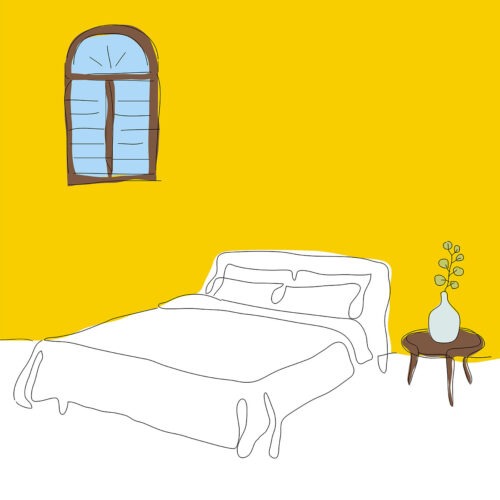Arikamedu – Seminary
A Journey through the Ancient Ruins of a Lost Civilization:
The ancient Roman trading center, Arikamedu, is situated in Kakkayanthope, on the right bank of the Ariyankuppam River, about 8 kilometres from White Town. The port town has a significant history that stretches back to the second century BCE. The Romans, Cholas, and French all left their imprints on this beautiful location throughout their time there. However, due to development pressures, unsympathetic changes to ancient structures, and insensitive new construction over the past few years, the town has been gradually losing its allure and its distinctive Franco-Tamil flavour.
Trade between the Romans and the Greco-Romans originally centred on the historic fishing community of Arikamedu. A historical Chola coin from the year 1 BCE suggests that the Cholas were active in a number of port-related endeavours. There are references to some of the names on the seals in Sangam literature as well. Along with sea trade, there appears to be evidence of inland trade along river valley routes with other “megalithic” sites, including Kaveripattinam, Alagankulam, Musiri, and Suttukeni. In the book Periplus Maris Erythraei, Jouveau-Dubreail identified Arikamedu as Poduke. Additionally, it has been referred to as “Yavanas” in Tamil literature.
The Ancient Trade
As evidenced by the presence of Amphora jars, wine was probably a significant import. Yavanas and wine are frequently referenced together in Tamil literature, indicating that wine was a prized good. Olive oil and garum sauce were probably brought as well. Wastage at the production site shows that textiles, beads, semiprecious gems, glass, and shell bangles may have been exported. Even now, after a significant downpour, careful scrutiny reveals droplets of beads on the banks of the river.
Arikamedu in Medieval Times
Arikamedu was thought to have been abandoned after 200 A.D., but Amphora fragments and a copper coin struck between 306 and 324 A.D. by Constantine the Great reveal that Arikamedu was actually occupied from 300 A.D. to 700 A.D. as well. Chola coins, Chinese Celadon pottery, and other East Asian glazed ceramics have all been discovered, indicating possible participation in the Medieval East-West maritime trade. The pottery from Gangaikonda cholapuram from the eleventh century is strikingly comparable to some of the pottery found here. There are also decorated clay lamps from the mediaeval era and water jar spouts. The building is made of bricks from several eras, indicating that something older was placed over the current construction. This makes it impossible to exactly date the construction.


Good To Know
Tourist Spot:
Former Roman trading center, the seminary building was built in 1771 - 1773 by the French.
Distance:
8.1 km from Mahatma Gandhi Statue, White town.
Entry charge:
There is no entry fee to visit Arikamedu seminary.
Door opening hours:
You can visit Arikamedu seminary from 10 a.m. to 4 p.m. on all days of the week.
Allowed:
Kids, mobile & camera.
Not Allowed:
Prohibited to lean and climb on the seminary building, liquors, throw plastics & pet animals.
Available:
Mangrove Boating from Art & Craft Village & FFF (Fresh Fish Food) Seafood Restaurant.
Food Near:
FFF restaurant.
Stay Near:
La Paradise Luxury & Le Pondy Luxury.
Parking:
Two wheeler and Car, Free parking outside of the Arikamedu garden.
Restroom:
Not available.
Location:
Door Nº 405, Arikamedu, Kakkayanthope, Ariyankuppam Commune, Puducherry, 605007, INDIA.
Arikamedu in Modern Times
There are two main things to see on the port: the seminary and the mission house. The seminary was built in 1771–1773 by a French Catholic priest, Monsieur Pigneau de Behaine, for the Jesuit missionaries who had been driven out of Siam. It was abandoned in 1783. The remaining walls of the seminary show that a mixed style of brick was used, some of them probably taken from ancient structures. The mission house has been the point of reference for all excavators, including Wheeler, Casal, and Vimala Begely. A few pieces of Arikamedu pottery, glass, and ornamental ceramic tiles and reliefs may be found in the Puducherry Museum.
Arikamedu in Recent Times
The place has recently undergone renovation work by the Government of Puducherry. This location is now easily accessible via Cuddalore Road (just 3.5 km from Ariyankuppam Church) and secure for visitors. The pathways have been cleaned, and trees that obstruct views have been removed.
Arikamedu at Present
Arikamedu is undoubtedly worth a visit if you’re seeking a quiet, remote location to include on your itinerary. The lush forests and intriguing ruins are compelling attractions, but because the area is remote and the roads are rough, it’s best to travel in a group and preferably in your own car. The location is also reachable by waterways from nearby Mangrove Boating, which steers through the Magroove Forest. It will undoubtedly be an exciting adventure with beautiful scenery. You’ll feel as though you’ve been transported to a different time and location as soon as you arrive. With a lovely sunset, the mangoes dangling from the lower branches resemble the forbidden fruit, and the orchard itself transforms into the Garden of Eden. You’ll need to do more than just read this leaflet if you want to genuinely feel the vibe of Arikamedu. You must visit and let the past permeate your own being.





Doors Calling











